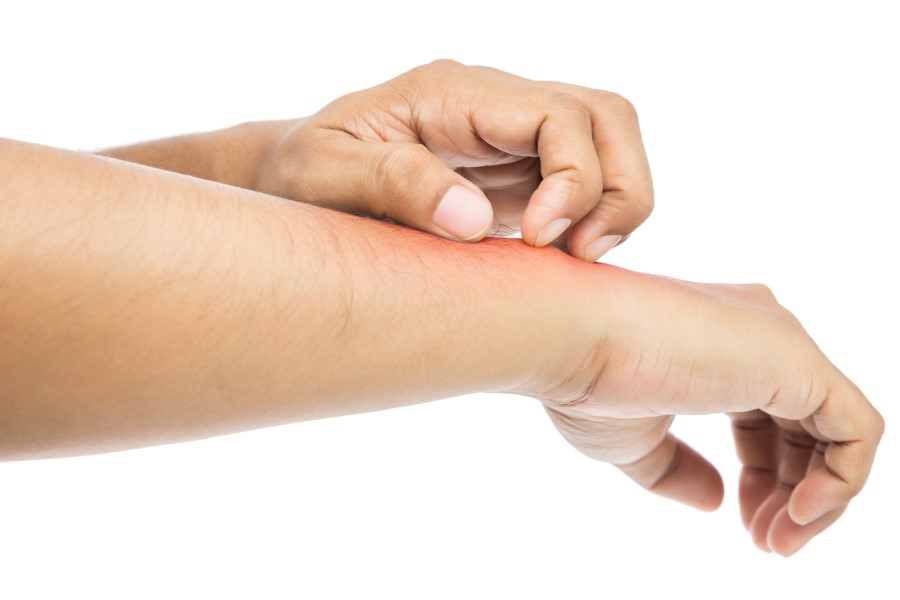How to Prevent Corn Allergic Reactions & What to Avoid?

Millions of people worldwide have different food allergies regardless of age, region, and gender. Though uncommon, corn allergy is a severe one among the others. It is challenging due to its wide presence in various food products and non-food items.
This article will provide insight into corn allergy, its signs and symptoms, causes, and diagnoses. Understanding these aspects is necessary for effective management. Individuals suffering from the condition can keep reading to learn the necessary measures they can take to treat and prevent it.

Table of Contents

What are Corn Allergies?
Corn allergy occurs when human immunity confuses corn with something harmful and eventually releases antibodies to fight the allergen. In addition, the body recognizes the allergen and sends signals to the immune system to release chemicals responsible for symptoms of a corn allergy.
Apart from acute sensitivity, individuals might experience other symptoms that could be seen later, posing a challenge to diagnosis and treatment. Allergies to corn can manifest in the symptoms of different body systems and range from light to extreme symptoms.
What are the Causes of Corn Allergies?
In contrast to other food allergies like seafood, wheat, nuts, etc., the primary reason behind corn allergy is not confirmed. Experts believe that it may be due to a combination of genetic, environmental, and epigenetic factors. A few of them are:
- Zein, a protein found in corn, is considered a potential reason behind corn allergy. When a human body identifies zein, it releases immunoglobulin (IgE) to fight the protein. IgE, in response, stimulates the immune system cells to release histamines and other chemicals, leading to corn allergy. This reaction may result from eating raw and cooked corn or any food items that have corn in them. As all corn products do not contain zein, it is wise to avoid such foods.
- Surgical gloves or intravenous fluid containing corn may cause allergic reactions.
- Corn pollen, grass pollen, and cornstarch are a few other culprits behind severe corn allergic reactions like asthma and hay fever (nasal congestion).
- Cross-contamination with other foods or allergens might be involved. People with corn allergy may also encounter similar proteins in other related plants or foods.
- Certain corn-derived additives and preservatives also have the potential to cause sensitization, such as the sweetener high-fructose corn syrup.
- Family history and genetics may play a role in the occurrence of corn allergies, such that people with a family history of allergies are at risk for developing corn allergies.
- Certain conditions with an inability to metabolize histamine may present symptoms similar to corn’s protein-related allergy but of histamine origin.
What are the Signs and Symptoms of Corn Allergy?

The potential reason behind corn allergy is exposure to corn or corn products such as fructose syrup, corn starch, vegetable oil, and more for a prolonged period.
However, reactions to this allergy vary from person to person. While for some, the signs may be uncomfortable, for others, they may be severe and, in a worse case, life-threatening. These symptoms typically take a few minutes or may take up to 2 hours after eating corn or its products.
Initial Symptoms of Corn Allergy
Severe Symptoms of Corn Allergy
Anaphylaxis is a fatal allergic sign of corn allergy. Its symptoms are:
Who is at Risk of Corn Allergy?
Though it can be fatal, corn allergy is not common. Individuals with asthma, hives, hay fever, and eczema are susceptible to this allergy. Furthermore, anyone with any other food allergies is also at greater risk. It is also essential to analyze if anyone in the family is allergic to corn, especially a sibling.
There may also be heightened risk for those without allergies but who have a family history of corn allergy or other atopic diseases. Likewise, people suffering from poor immunity or constantly exposed to corn products, say agri-industry workers, should also be careful. One should consider the assistance of a specialist for specially designed risk evaluation and minimization.
How to Diagnose Corn Allergy?
Diagnosis of food allergies is a daunting task. While the most common tests for corn allergy are of blood and skin, the chances of false-positive reports are high. That said, it is crucial to consider the allergic reaction of the food item that caused the allergy with the other reports as well. A few others can be:
- As corn is a popular cereal and abundantly found in other edibles, one can maintain a record of the food items that triggered any of these above-listed allergic symptoms.
- An elimination diet is another helpful way to sidestep any allergic reactions. The process includes restricting frequently consumed food items at first. Then, those items are included in the diet at specific intervals so that the signs can be traced back conveniently.
- The test is where patients eat bits of corn; however, it is done under the doctor’s supervision and checks for symptoms.
- In some instances, patch tests may also be conducted on the patients to induce delayed hypersensitivity reactions to corn protein; however, this is not commonly practiced.
- This involves eating small portions of corn while having a medical professional oversee the process to check for any possibility of symptoms.
Note: An elimination diet should be followed for at least 2 weeks to assess the allergic reactions properly. However, it is wise to consult a professional before opting for this diet to avoid further complications.
What are the Treatments for Corn Allergies?
The treatment for corn allergy depends on the severity of the symptoms. Treating corn allergy for mild symptoms includes managing the signs till they disappear. On the contrary, for anaphylactic reactions, the available treatments are immediate medical attention and injection of epinephrine, an EpiPen.
In most severe cases where the above treatments do not control a patient’s symptoms, then patients may need to be admitted to the hospital for additional drugs, including intravenous fluids and hydrocarbons such as oxygen. The long-term plan includes completely avoiding corn, including cornmeal and all corn derivatives, and seeing an allergist for specific plans and emergency measures for the allergy.
How to Prevent Corn Allergy?
It goes without saying that the best way to avoid corn allergy is to cut down on corn strictly. Nonetheless, it is not as easy as it sounds. Therefore, it is essential to work out a diet under the guidance of a professional nutritionist to familiarise oneself with the fool-label ingredients.
Additionally, when eating out at a restaurant, a friend's place, or any such family gathering, it is essential to talk to the cook or people involved in catering to learn about preparation and ingredients to ensure 100% immunity against corn allergy.
To conclude, it has been established that corn allergy management includes proper knowledge of corn allergy symptoms. It is improved when triggers are identified, corn products are avoided, and medical advice is sought. Use food diaries, exclusion diets, and other methods only after consulting a doctor. This way, the burden of corn allergies is correctly managed, and the quality of life is improved for those suffering from corn allergies.
Protect What Matters - Explore Other Insurance Options














